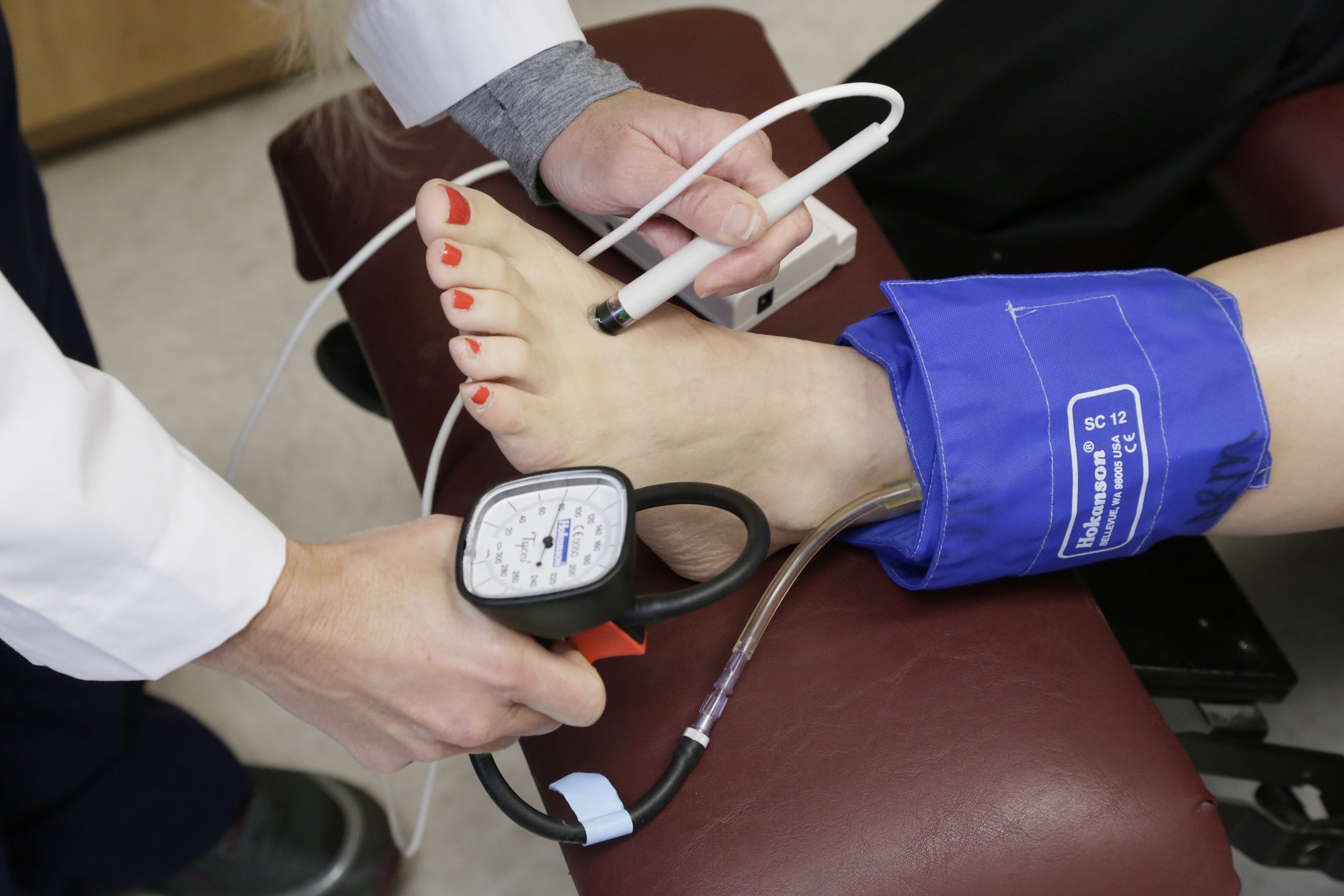Using the ankle brachial index is an effective, fast, and noninvasive method of checking a person’s risk for PAD, peripheral artery disease. This condition is when the arteries within the arms or legs are either blocked or narrowed. Those with peripheral artery disease have a higher risk of leg pain, poor circulation, stroke, and heart attack.

How Is Ankle Brachial Index Measured?
Abbreviated as ABI, your healthcare provider calculates your ABI by taking the blood pressure of an artery within the ankle and dividing it by the blood pressure within an arm’s artery. This simple division will give the technician a figure with a decimal point.
How Do I Prepare for the Test?
You do not have to do much to prepare for your ankle brachial test. You are able to follow your normal diet and take your normal medications, unless your doctor gives you alternate instructions.
Most people prefer to wear comfortable, loose clothing as this makes it easier for the technicians to put the blood pressure cuff on the appropriate locations on your ankle and arm. Before the procedure, the technicians will have you rest for a minimum of 15 or 30 minutes.
What Should I Expect During an ABI Test?
- The ABI test itself will feel very similar to any other blood pressure test with a few differences. You will be lying flat throughout the procedure. The technician will begin by placing the first blood pressure cuff immediately above your ankle. He/she then places an ultrasound probe on the artery, using this to listen to your blood flow through the relevant vessel.
- The technician then inflates your blood pressure cuff, increasing the pressure until your blood flow stops going through the vessel. It shouldn’t hurt, but there may be mild discomfort. After this, the technician slowly releases the cuff’s pressure. Your systolic pressure is the figure when the technician can hear the blood flow again and that is the measurement used for calculating the ankle brachial index.
This entire process will be repeated on the other ankle and on both arms. Using the results, the technician can calculate your ABI. The simple division involves the top number of the fraction being the higher systolic blood pressure from your ankles while the bottom number is the higher systolic blood pressure from the arms.
In some cases, the ABI test will be paired with an exercise test. They will perform the test twice, before and after exercising, to see how that affects your results. In most cases, this simply involves walking on a treadmill.
Who Should Get an Ankle Brachial Index Test?
You should ask your doctor whether you should have the ankle brachial test done if you are at least 50 years old or have any risk factors related to peripheral artery disease, including:
- Smoking or having a history of smoking
- High blood pressure
- Diabetes
- High cholesterol
Those who have PAD diagnosis already may also need to undergo an ankle brachial index test to confirm whether their treatment is effective or if their condition has gotten worse.
In some cases, those with symptoms of PAD will undergo an exercise ABI test to check whether the symptoms like leg pain during walking are because of PAD or unrelated conditions like spinal stenosis.
What Do the Results Mean?
Your doctor will explain the results of your test to you. The results will indicate one of the following:
- Values of 1.0 to 1.4 indicate no blockage: An ABI number within this range implies that you don’t have peripheral artery disease. Those with some of the risk factors mentioned above or a family history of PAD should let their doctor know so they can keep monitoring the risk level.
- Values of 0.9 or less indicate blockage: If your ABI is less than 1.0, this indicates the arteries within your leg have narrowed. The blockage can be mild to severe, depending on the number, and this indicates the severity of your PAD.
- Values over 1.4 indicate rigid arteries: ABI numbers higher than 1.4 may indicate that the arteries are rigid, meaning they don’t compress when the technician inflates the blood pressure cuff. In this situation, you might need an ultrasound to check whether you have PAD instead of the ABI test. Your doctor may also suggest doing a toe-brachial index test, which instead compares the blood pressure of your arm with that of your big toe.
The ranges for these diagnoses are slightly different in the case of exercise ankle brachial index tests. Because of this, you will need to consult with your doctor to understand the results.
What Should You Do with the Results?
Your doctor’s recommendations following your ABI test will depend on whether you showed blockage and the severity of it. Treatment for PAD may include lifestyle changes, medicine, and/or surgery. In some cases, you will need to undergo imaging testing to determine the best course of treatment.
Just a few of the possible treatments and lifestyle changes for peripheral artery disease include:
- Quitting smoking
- Remaining physically active
- Treating your diabetes, high blood pressure, and high cholesterol, if relevant
- Following a healthy diet
- Taking medication designed to improve blood flow to the legs
- Taking medication designed to prevent blood clots
- Having an angioplasty or other procedure to restore your blood flow
- Having surgery on the leg, but only in the case of severe blockage
